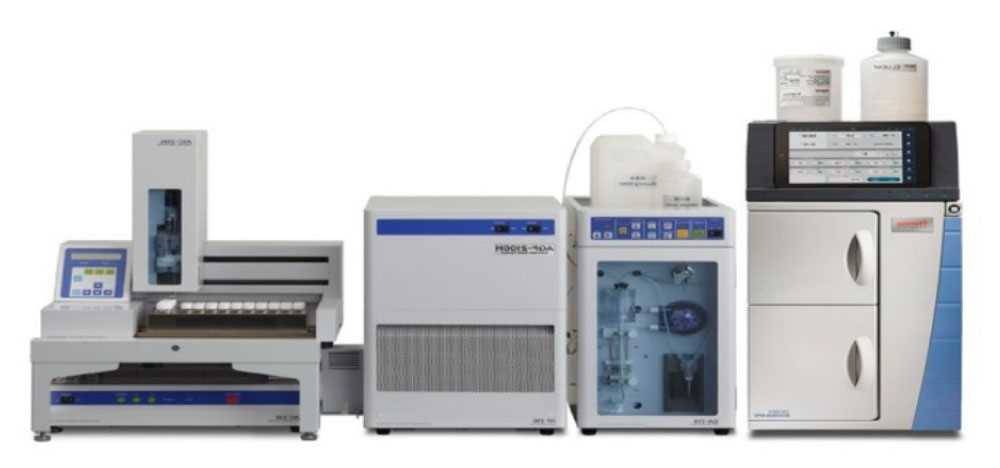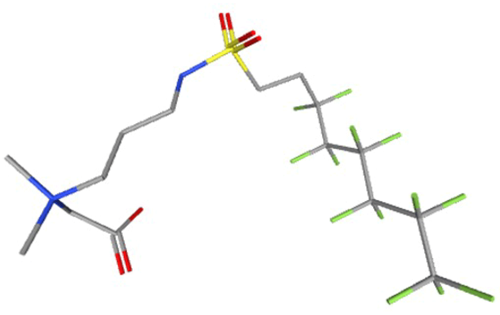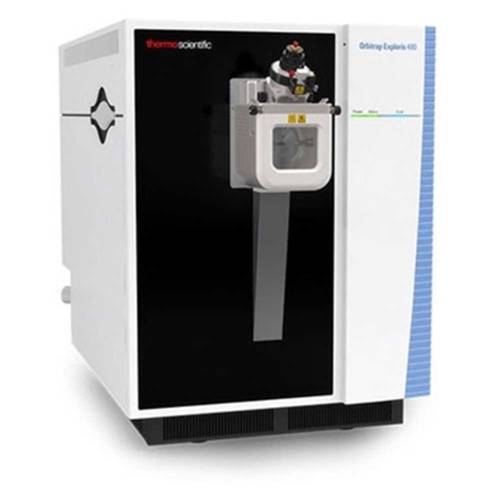EnviroMail 147 Australia - PFAS: Emerged or Emerging?
Supplementary techniques for an unwieldly class of compounds: TOF, TOP-A & HRMS

An uncertain landscape
The fact that thousands of PFAS containing formulations have been registered for commercial use and the fact that good laboratory service providers deliver PFAS services for about 60 unique analytes implies that contamination might be much broader than thought. The current technical processes for elucidating unidentified species are limited. However, the situation is not without hope. Analytical chemists have developed methods that probe and can give shape to the greater breadth of the PFAS problem.
The methods available vary from the somewhat simple to the significantly complex and generate data that includes the gross and ‘aggregate’, to the highly specific. When the different types of data are carefully combined, useful information is created and decision-makers and consultants are enabled to take the critical steps needed towards alleviating the threats and anxieties that have come with the spread of PFAS.
Total Organic Fluorine1
Total organic fluorine (TOF) belongs at the somewhat simple end of the spectrum and provides aggregate data about the entirety of organofluorine compounds in a sample. This is useful because PFAS are organofluorine compounds and hence knowledge of organofluorine levels allows inferences to be made about maximum levels of PFAS. The method leverages a technique called combustion ion chromatography (CIC), which is fundamentally different from the liquid chromatography tandem mass spectrometry (LCMSMS) technique used in target PFAS methods and with total oxidisable precursor assay (TOP-A). Briefly, the inorganic fluorine in a sample is removed and the remaining fluorine (the organofluorine) is measured in bulk.

Figure1: ALS uses combustion ion chromatography to measure total organic fluorine
While TOF can be useful, current detection limits are not helpful in situations requiring trace level detection, such as evaluation to 99% ecological protection levels. Although when purposes are different the data generated can be very useful. Such as in product verification of fluorine free foams (F3s), consumer products, and for reuse or disposal of waste products like biosolids. Other useful applications include assessing the mass balance of organofluorine before and after treatment processes including destructive techniques. As better scientific apparatus has become available detection limits are coming down and some jurisdictions have even applied limits for TOF in more traditional environmental matrices.

Figure 2: Differences in total PFAS as expressed as fluoride in five Queensland biosolid samples
A consideration when interpreting TOF data is that is not specific for PFAS and may include contributions from other fluorinated organic compounds such as some pharmaceuticals and agricultural products. Hence when TOF is applied in remediation or product/process verification settings, respective conceptual site models and product formulation data can be beneficial.
Total Oxidisable Precursor Assay2
TOP-A can be more useful than TOF when lower detection limits are required. The difference between targeted PFAS analysis and TOP-A is in sample preparation. The LCMSMS component is unchanged. The basic principle of TOP-A is relatively easy to understand. Chemical reagents and gentle heating cause formation of hydroxyl radicals, which attack and transform PFAS precursors into thermodynamically more stable perfluorocarboxylic acids (PFCAs), of which the C4-C16 PFCA homologues are routinely measured.
For example, PFAS telomers such as fluorotelomer sulfonates (FTSAs) degrade into sets of PFCAs with different lengths some of which fall within the C4-C16 band. More complex telomer-based precursors that are tested infrequently (or not all), can degrade under TOP-A similarly, revealing their presence.

Figure 3: 6:2 FTAB is a component of some legacy replacement AFFFs
An example is 6:2 fluorotelomer sulfonamido propyl betaine. More commonly referred to as 6:2 FTAB this compound is an ingredient of AFFF formulations like Chemours’ Ansulite that replaced 3M’s Lightwater widely at fire training grounds across Australia around 20053. Experiments at ALS indicate over 60% of 6:2 FTAB will show up in TOP-A as PFBA, PFPeA, PFHxA and PFHpA4.
TOF will also exhibit positive results in the presence of 6:2 FTAB and when ALS developed their TOF method modifications to standard sample preparation methods were required to ensure adequate recoveries of organofluorine components in Ansulite. The steps in the TOP-A method and the data produced sit at a higher technical level than TOF.

Figure 4: PFAS content normalised against Ansulite (%) for three AFFFs. TOP-A reveals the presence of precursors – PFSAs (yellow) are not expected to transform substantially under TOP-A, PFCAs (blue) are the dominant TOP-A reaction products, low precursor concentrations post TOP-A indicate complete oxidation (FTSAs and sulfonamides in pink and red)

Figure 5: ALS New Zealand use the Thermo Fisher Exploris 480 to discover unknown PFAS
High Resolution Mass Spectrometry (HRMS) – Orbitrap™
The most complex supplementary method available from commercial laboratories is HRMS, and ALS uses an instrument called Orbitrap5. Another type of HRMS is time-of-flight mass spectrometry (also TOF, but not to be confused with total organic fluorine) which produces similar, but lower-quality data. The other type of HRMS instrument used in PFAS research is Fourier transform ion cyclotron resonance (FT-ICR). The cost of this last type of instrument can be in the tens of millions of dollars range, and combined with slow processing speeds and high maintenance requirements it is mostly used in academic research.
ALS has Orbitraps at their New Zealand and UK laboratories and have used them to identify otherwise untested for PFAS aiding in understanding intermediate products in technologies such as mechanochemical destructive techniques like ball milling where we identified fluorinated aldehydes. Wastewaters from treatment works have been tested too, revealing PFAS such as phosphate diesters, several fluorotelomer betaines, perfluoroether carboxylates as well as the routinely monitored perfluorinated alkyl sulfonates.
All three HRMS instrument types are designed to detect the mass of sample components like PFAS very accurately, allowing chemical formulas and frequently structural information to be determined. Hence HRMS is a way to specifically identify the many thousands of PFAS not included in routine listings. The data produced by HRMS can be extremely detailed and highly trained scientists are required to interpret it.

Figure 6: Orbitrap chromatograph of wastewater shows natural organic matter in the top image with few distinct features, but by leveraging the negative mass defect of fluorine fluorinated sample components can be distinguished from the wealth of Orbitrap data in the image below:
The possibilities achievable by HRMS are vast, and it is best to consult with ALS regarding specific project objectives when undertaking an HRMS project. Results and findings are generally in the form of a customised technical report that could include more basic data such as qualitative only identification of suspect PFAS components, more detailed probing of analytical data including identification confidence rankings (using industry established protocols) and semiquantitative analysis, all the way to PFAS source tracking and bench scale process modelling supplementing formulation of reaction mechanisms and PFAS transformation pathways.
The toolkit as it stands.
Since the emergence of PFAS as contaminants of concern, chemists have battled hard to devise analytical solutions. ALS provides analytical services for each of today’s prevailing solutions including TOF, TOP-A and HRMS. ALS technical experts and friendly customer services teams are available to discuss your needs for routine PFAS analysis, total organic fluorine, total oxidisable precursor assay, and high-resolution mass spectrometry. Additionally, to discuss options for analysis of extended PFAS analyte lists, solid leaching procedures for PFAS, or any other analytical requirements you may have for your projects, please don’t hesitate to reach out to your account manager or one of our customer service teams.
1 Methods for total organic fluorine are typically of either the extracted organic fluorine (EOF) or adsorbable organic fluorine (AOF) methods. ALS Australia’s approach is based on the EOF method and EOF can be used interchangeably with TOF for the purposes of this discussion.
2 ALS method is based on the work of Erika Houtz & David Sedlak (2012), with the exception that oxidant dosing is increased to account for incomplete transformation; and recommended in “Improving Measurement Reliability of the PFAS TOP Assay” published by NMI, ALS, Eurofins and Ventia in 2019.
3 Oakey disclosure documents, accessible here, accessed 5 December 2023.
4 Part of the unaccounted-for breakdown products included trifluoroacetic acid (TFA) and PFPrA.
5 Thermo Fisher produce the Orbitrap instrument.
Get in touch with us
If you have any questions relating to PFAS Screening, please contact:
Brisbane
Sydney
Melbourne
Perth





















































